It started in Minnesota’s Twin Cities, headed into southwest Wisconsin and finished at Lely’s North American headquarters in Pella, Iowa.
The first stop was Green Waves Farm Inc. in Saint Michael, Minnesota. The Berning family started milking with four robots in a new cross-ventilated freestall barn in 2014 while they continued to operate their parlor. They had always planned to double the number of robots by adding on a mirror image of the first half of the barn.
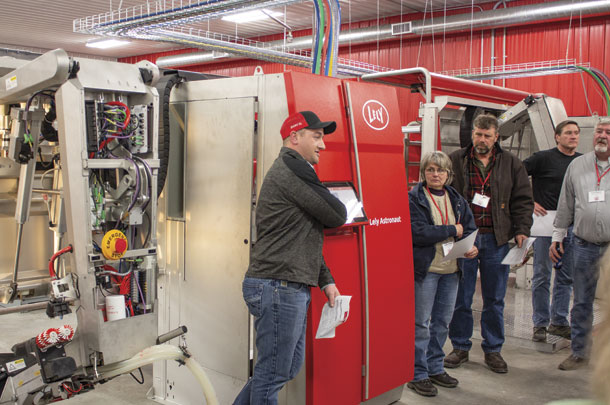
With labor hard to find and family members – David; his father, Mark; and his uncle, Paul – filling in shifts at the parlor and at the robot barn, their timeline was expedited, and they built the second half with four more robots in 2017. Now they are able to manage the farm with around two people per day.
Rohe Dairy in Freeport, Minnesota, was an example of retrofitting a 20-year-old freestall barn to accommodate robots. Brothers Marvin, Jim and Mike Rohe and Marvin’s son Dustin added 65 feet on to the end of the barn to accommodate four automated milking systems and two sorting pens. In addition to attracting the interest of the next generation and eliminating issues with employees, the farm is selling the same amount of milk with fewer cows.
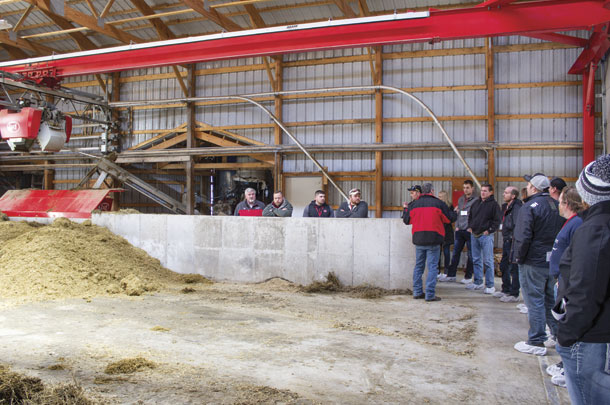
The stop at Mehr Dairy in Albany, Minnesota, featured a different set of automation. Owner Greg Mehr installed two milking robots in 2011. With that equipment fully paid off, he installed an automated feeding system and manure vacuum in late 2017.
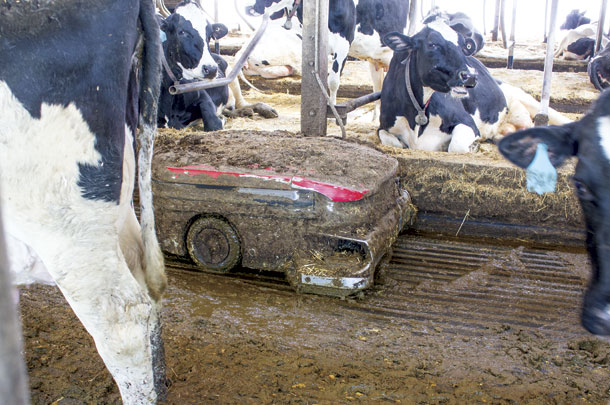
The feed kitchen was positioned on the footprint of the old stanchion barn to utilize the adjacent tower silos.
The kitchen services two mixing and feeding robots. While one is filling and mixing, the other is out delivering, pushing up and measuring feed in the bunks in both the lactating cow barn and the heifer pens 250 yards away from the milking barn. This was the first farm in the U.S. to install the automated manure vacuum. Mehr said he did not want to install an alley scraper, and the vacuum works with both the slatted and solid floors in the barn.
One hundred days after a tornado demolished their freestall barn on Sept. 20, Alan and Sharon Meyer, their son Andy and his wife, Samantha, moved their cows back into a barn built on the same footprint at Richland Dairy in Kenyon, Minnesota. In the rebuilding process, they replaced their two existing automated milking systems with Lely’s newest model. Andy reported an increased amount of free time, reduced heifer training time and a 50 percent decrease in teat spray used with this model compared to their older one. With the herd getting acquainted with their new surroundings, Andy said his goal for a year from now is to be at 7,000 pounds of milk per robot.
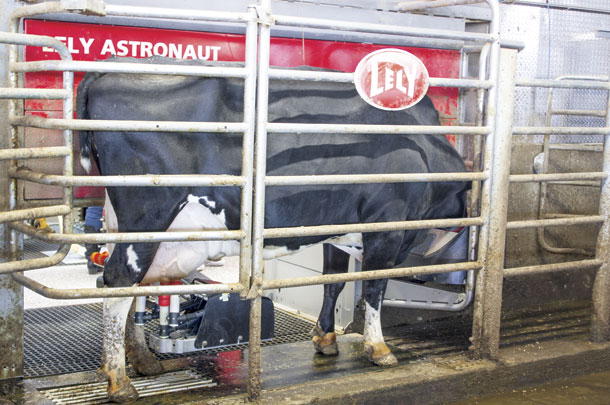
At R & K Dairy in Altura, Minnesota, Rob Kreidermacher is able to keep his labor costs at 63 cents per hundredweight (cwt). Four milking robots helped him reduce labor on his 300-cow farm to one employee. He recently added another part-time employee to help with feeding calves to give him and his wife a little more time away from the farm. Kreidermacher said he was especially thankful for the robots this winter when heavy snow caused the roof of the dry cow barn to collapse. “The robots milked while I took care of that,” he said.
The Manning family considered building a new parlor at Crestview Farms in Eastman, Wisconsin, until one of the family members who also has a masonry business pointed out a growing competition for labor. Instead, they built a new four-row, tunnel-ventilated barn with four robots in 2016. A year-and-a-half later, they switched to a different brand of robots and earlier this year they added a fifth Lely A4 robot to increase free time and reduce fetching in the milking system.
Following the farm tours, the group headed to Pella, Iowa, with its first stop at the Lely Training Center where workshops were held on farm management and maintenance tasks.
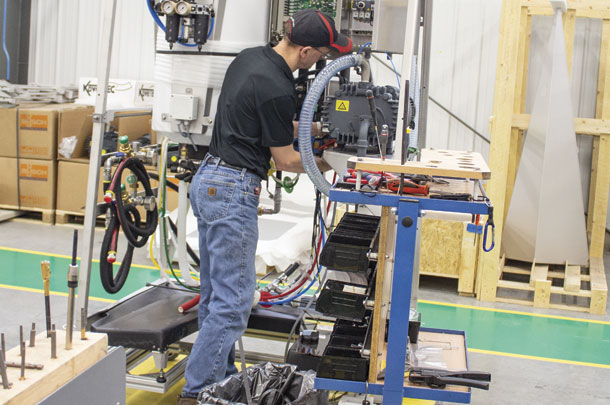
The next morning, Lely staff members cooked breakfast for the group, and a factory tour was held to see the robots assembled from a bare frame to fully functional and ready to ship. The North American factory also builds weigh floors, cow brushes and central units.
The tour was designed to show the journey of automation both in practice on the farm and in seeing its components firsthand. ![]()
PHOTO 1: The tour group was comprised of Lely dealers and dairy producers who were considering robots, in the process of installing them or already using them on their farms. Photo by Karri Scheffers, Lely North America.
PHOTO 2: At the Lely Training Center, participants could open up the equipment and learn more about what maintenance is required and how often.
PHOTO 3: A visit to Mehr Dairy was the first opportunity for many to see automated feeding in action.
PHOTO 4: An automated manure vacuum was also in use on slatted and solid floors at Mehr Dairy.
PHOTO 5: Robotic milking was a large part of the tour, and each farm offered a look at different ways to incorporate the technology.
PHOTO 6: The factory tour gave everyone a chance to see how the equipment is assembled. This is one of the central unit stations.Photos by Karen Lee.

-
Karen Lee
- Editor
- Progressive Dairyman
- Email Karen Lee




